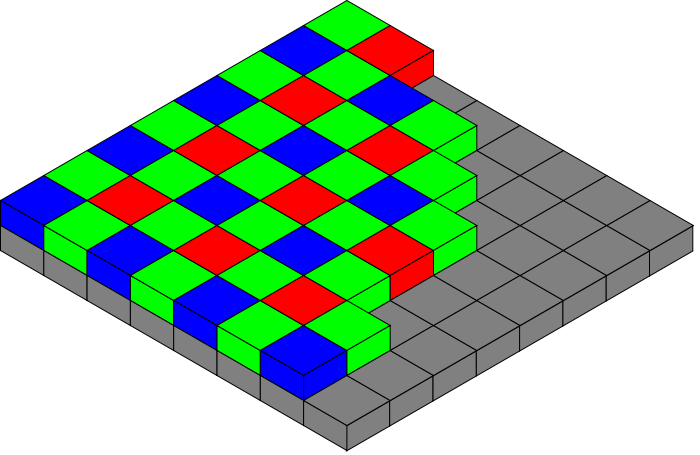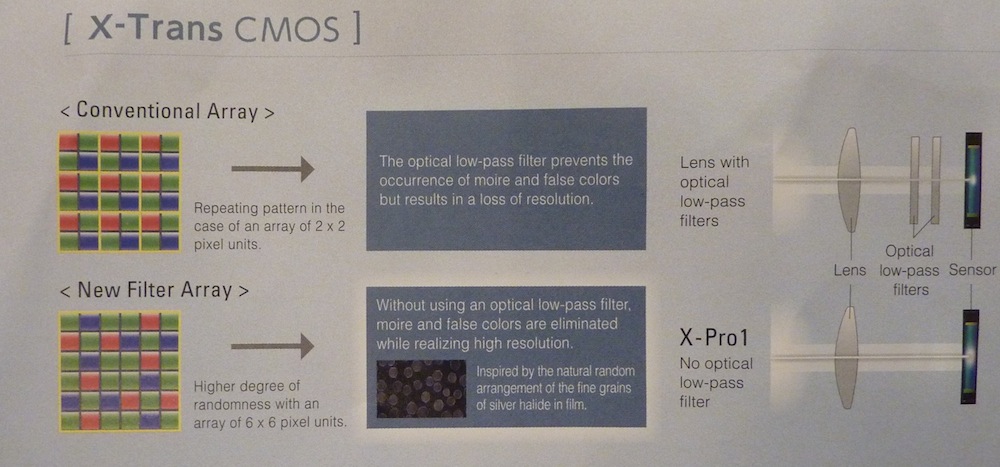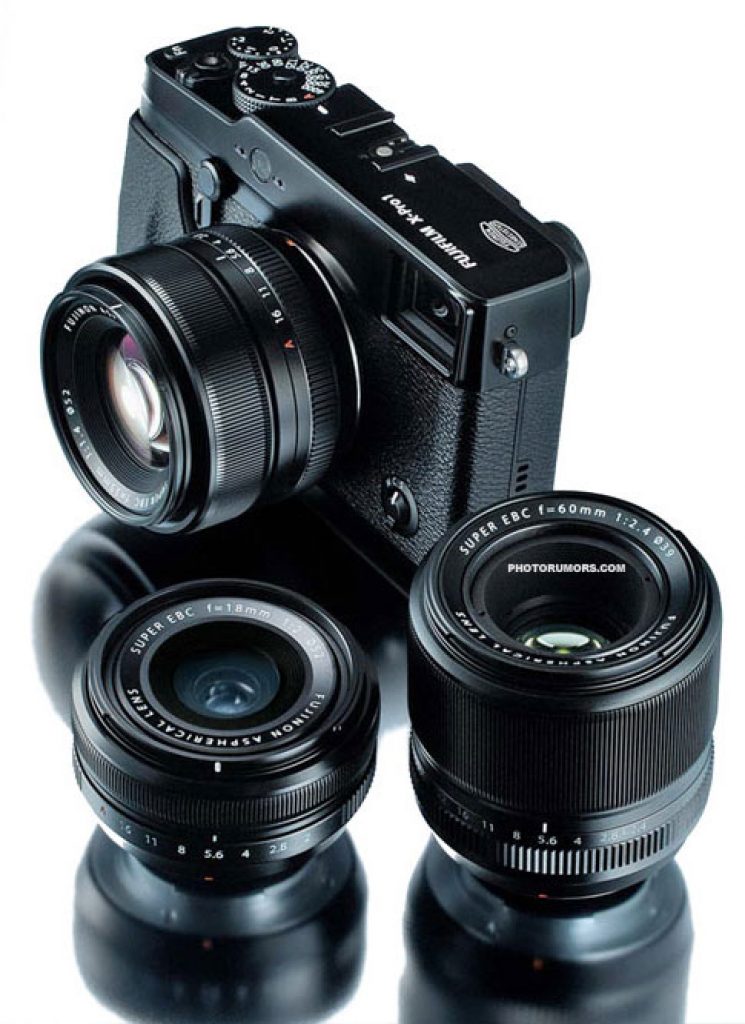As I previously mentioned in a technical article published to the Embedded Vision Alliance site last August, the Bayer Pattern (named after Eastman Kodak's Bryce E. Bayer, its inventor) is by far the most common filter array pattern used with both CCDs and CMOS image sensors. Containing 50% green filters, 25% red filters and 25% blue filters, its proportions roughly match the spectral sensitivity of the human eye:

However, my article also pointed out that plenty of other schemes have been tried out over the years. Foveon (now Sigma) dispensed with per-pixel filter schemes completely, for example, relying on the varying penetration of different light frequencies into semiconductor material, correlated against the varying depth of frequency-tuned photodiodes, multiple of which were 'stacked' within a given pixel. The first-generation JVC HDV camcorder currently collecting dust on my shelf contains an image sensor whose array encompassed clear, green, cyan, and yellow filters.
Kodak several years ago promoted several families of image sensors that supplemented the conventional red, green and blue filters with panchromatic (clear) ones in various proportions and patterns, trading off resolution accuracy for improved low-light performance, and reminiscent of some of the sub-pixel patterns used in PenTile (now Samsung) OLEDs. And several companies (and research organizations) have attempted to develop sensors harnessing JVC-reminiscent CMY (cyan, magenta, and yellow) subtractive filter arrays.
Thanks to a Consumer Electronics Show report that appeared yesterday on the IEEE Spectrum site, I became aware that camera (and sensor) manufacturer Fujifilm has come up with yet another filter array scheme. As my article described, with any non-Foveon approach, interpolation is used to approximate the remainder of the visible light spectrum at any particular pixel location (red and blue for a green-filtered pixel, for example). False-color and moiré-pattern artifacts are one possible outcome of this estimation process; an optical low-pass filter is a workaround, but results in lost image resolution. And, I should also note, moiré concerns also diminish as pixel dimensions decrease.

Fujifilm's approach, inspired by the random-sized silver halide flakes in conventional film, repeats the filter pattern in a 6×6 matrix (versus the Bayer filter's 2×2 array repetition), with notable randomness (and green-filter presence) within each 6×6 filter-cluster array iteration. The first production system to employ the new sensor design is Fujifilm's 16 Mpixel X-Pro1 digital camera, offering $600 removable lenses along with a $1700 base price tag, all available beginning next month.
Sensor innovation clearly is not dead!


